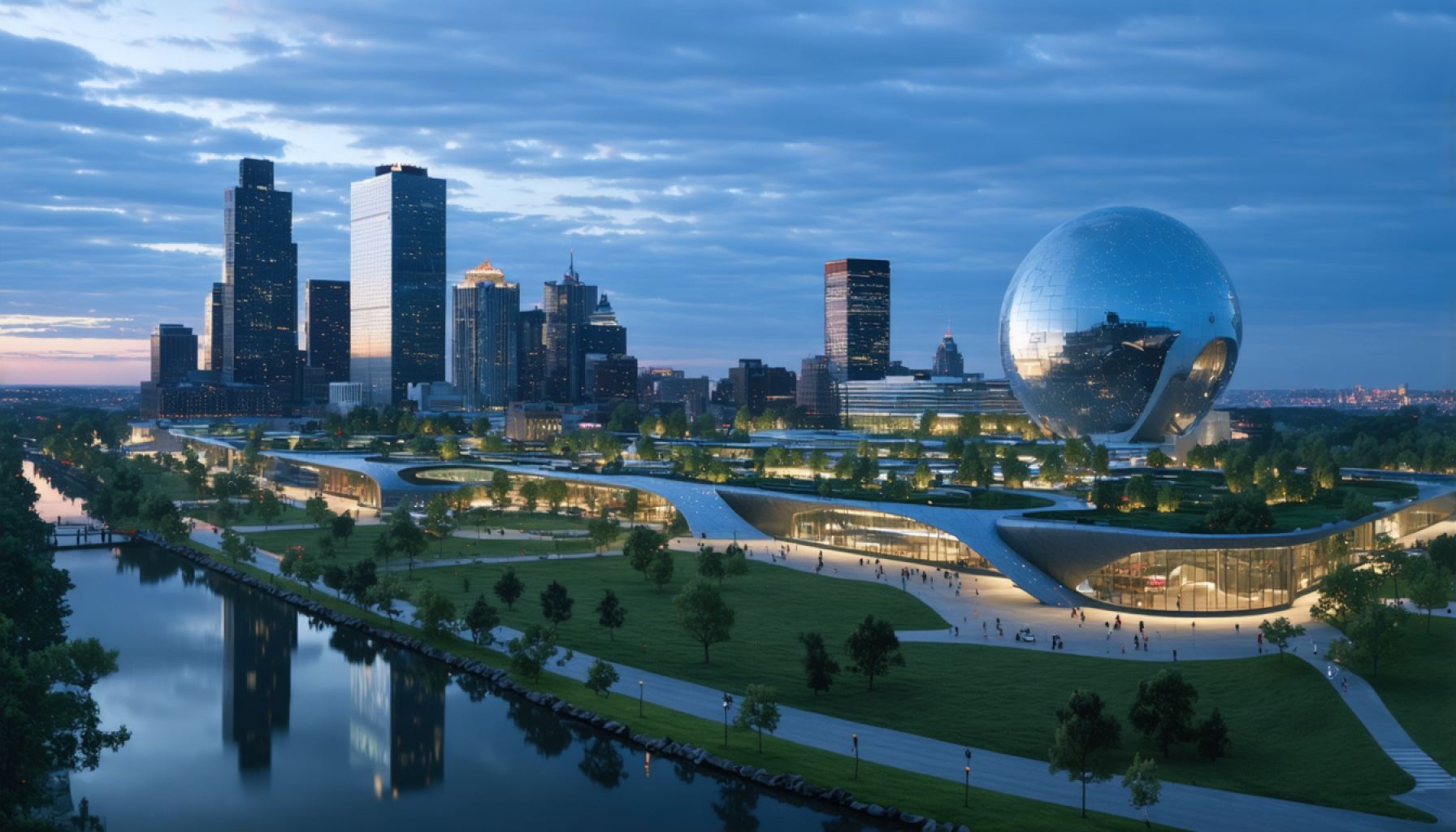- Brooklyn Park plans a transformative Biotech Innovation District by 2026, covering over 200 acres.
- The location at highways 169 and 610 aims to establish a vibrant ecosystem for medical and health technology companies.
- This district serves as an economic catalyst and a beacon of hope, poised to attract pioneers in biotech and healthcare.
- City leaders strive to fuel progress with science and technology, nurturing growth and fostering a legacy of discovery.
- The vision symbolizes Brooklyn Park’s ambition and commitment to creating opportunities and advancing medicine.
The city of Brooklyn Park stands on the cusp of transformation, eyeing the year 2026 as the dawn of a new era. In this burgeoning metropolis, leaders envision a Biotech Innovation District that promises to revolutionize the landscape with over 200 acres dedicated to cutting-edge medical and health technology companies. This grand concept, born from the fertile minds of city planners, aims to assemble a vibrant ecosystem of innovation at the crossroads of highways 169 and 610.
Amidst the whispering winds and underutilized lands, imaginations take flight as plans unfold for a futuristic hub where breakthroughs in medicine could arise. This district is more than just an economic catalyst; it’s a beacon of hope for a city poised to make strides in technology, health, and prosperity. The strategic location promises to attract pioneers in biotech and healthcare who are driven by the passion to redefine the future of medicine.
As residents and visitors alike await the possibility of groundbreaking ceremonies, the key takeaway from this visionary plan remains clear: innovation fuels progress. Brooklyn Park’s leaders are looking ahead, striving to infuse their community with purpose and possibility through the power of science and technology. What lies on the horizon is a testament to the city’s commitment to nurturing growth and fostering a legacy of discovery.
In a world where technology knows no bounds, Brooklyn Park is writing its own chapter—a tale of ambition, opportunity, and the relentless pursuit of advancement. The future stands ready to embrace those daring enough to dream and diligent enough to see it through.
Revolutionizing Brooklyn Park: The Biotech Innovation District Unveiled!
How-To Steps & Life Hacks for Developing a Biotech Hub
If you’re considering setting up a biotechnology hub similar to Brooklyn Park’s vision, consider these steps:
1. Identify Location: Choose strategic locations with good connectivity to transport links like highways and public transportation.
2. Infrastructure Planning: Invest in robust infrastructure that supports biotech operations such as labs and research facilities.
3. Partnerships and Collaboration: Form partnerships with universities, research institutes, and existing biotech firms.
4. Incentive Programs: Create incentive programs for startups and established companies to encourage them to relocate.
5. Regulatory Framework: Ensure compliance with relevant health and safety regulations, especially when dealing with biohazard substances.
6. Sustainability Practices: Incorporate eco-friendly processes in the design and operation of facilities.
Real-World Use Cases
Biotech hubs like the proposed one in Brooklyn Park can significantly impact:
– Healthcare: Advancing personalized medicine, regenerative therapies, and vaccine development.
– Environmental Studies: Developing alternative energy solutions and environmental conservation strategies.
– Agriculture: Innovating in biotech food production and crop resilience.
Market Forecasts & Industry Trends
The biotech industry is expected to grow substantially. According to the Global Market Insights report, the biotech market could surpass $775 billion by 2024, emphasizing sectors like biopharmaceuticals and regenerative medicine.
Reviews & Comparisons
Many cities aim to emulate successful biotech clusters such as:
– Boston-Cambridge Hub: Known for its high concentration of talent and leading institutions.
– San Francisco Bay Area: Renowned for its venture capital ecosystem and startup culture.
Controversies & Limitations
Challenges often include:
– Ethical concerns about genetic modifications and experimentation.
– High operational costs and regulatory hurdles.
– Risk of biotech instabilities, which might affect the environment.
Features, Specs & Pricing
A biotech hub typically requires:
– Research Facilities: State-of-the-art labs equipped with genomic and proteomic technologies.
– Commercial Space: Flexible spaces for startups and established firms.
– Networking Spaces: Areas designed to foster collaboration and innovation discussions.
Security & Sustainability
– Data Protection: Strong cybersecurity measures to protect sensitive research data.
– Sustainable Practices: Use of renewable energy sources and waste management practices to minimize the environmental footprint.
Insights & Predictions
By 2026, Brooklyn Park could become a leader in health tech innovation, potentially creating thousands of jobs and introducing pioneering health solutions. This initiative might inspire other cities to develop similar districts, thus enhancing global health outcomes.
Tutorials & Compatibility
To adapt to new biotech trends, professionals can:
– Attend workshops and seminars on emerging biotech technologies.
– Stay updated with continuous education programs offering the latest industry certifications.
Pros & Cons Overview
Pros:
– Stimulates economic growth and job creation.
– Fosters innovation in medical and health technologies.
Cons:
– High infrastructure costs and possible environmental impact.
– Requires ongoing investment in skills and technology development.
Actionable Recommendations
– Invest in Learning: Keep abreast of innovation through courses on biotechnology advancements.
– Engage with Community: Participate in local government and community meetings to stay informed about development progress.
For more insights into urban development and biotech ventures, visit the Economic Innovation Group’s site at Economic Innovation Group.
With Brooklyn Park at the helm, the realm of biotechnology seems poised for monumental advancements, setting a precedent for future urban and scientific development.
